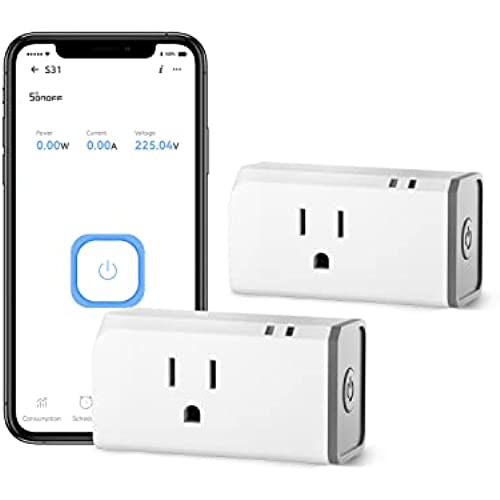
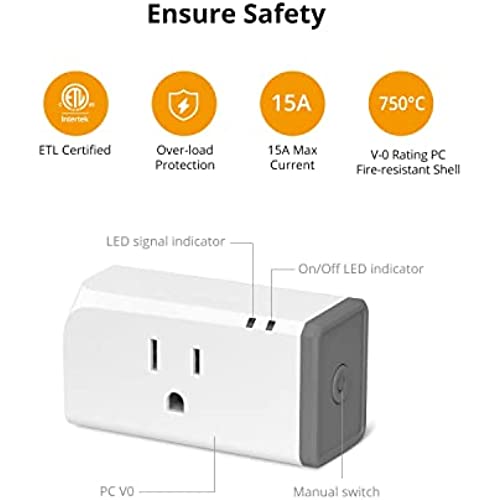
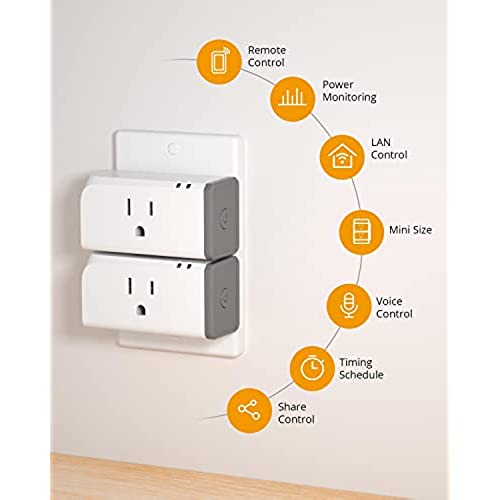
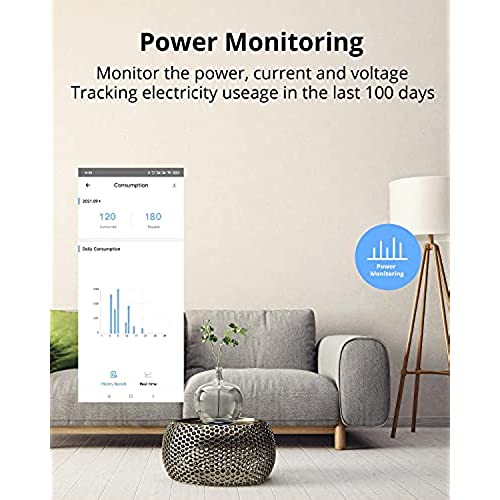
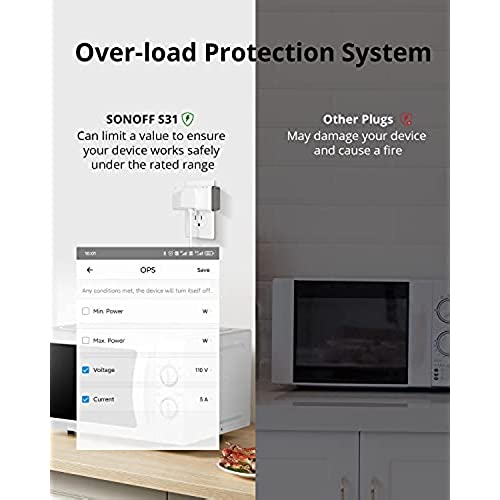









SONOFF S31 WiFi Smart Plug with Energy Monitoring, 15A Smart Outlet Socket ETL Certified, Work with Alexa & Google Home Assistant, IFTTT Supporting, 2.4 Ghz WiFi Only (2-Pack)
-

jcolino
> 3 dayQ: Why would my firewall block a well known Ch___ government monitoring site? I guess Im a suspicious person by nature, but while setting up my Sonoff Type B wifi Smart Plug (S40TPB) I got enough red flags to make me return it. A), the instructions ask me to turn on my phones location settings and share my phones location with the Smart Plug. OK, yellow flag, but I suppose that makes sense - sorta. B) Be sure that the MAC address of the device is not on the BLACKLIST of your MAC management [I presume they mean my network firewall. Blacklisted equals a huge RED FLAG for me. C) Please contact your ISP [Internet Service Provider] and confirm our server address is not shielded [I presume they mean blocked]. cn-disp.coolkit.cc and other coolkit.cc hostnames are basically in C___a, right? Quick question for anyone reading this far; why does a blacklisted server in C___a needs to know when I turn your lights on and off? After a few minutes of digging around to see where my turn the light on requests were being routed to, I quickly unplugged this little monster and promptly brought them to my nearest UPS store for a full refund.
-

Dave
> 3 dayThe internet at my house is unreliable. Days of outages in March 2023. So counting on cloud based tools is a non-starter. These plugs are easy to open up, reflash with Tasmota software, and control through a website hosted on each plug, or via an MQTT server. Im happy with the plug hardware being easy to update, and happy with the new software.
-

Miguel S.
> 3 dayExcelente compra, la configuración con la app eWelink se debe realizar primero via bluetooth y luego si enlazar al wifi 2.4Ghz. A través de ésta app se puede visualizar el consumo real de electricidad del aparato conectado. Enchufes muy estables, espero tengan la durabilidad adecuada
-

Kate B.
> 3 dayThese are easy to use. As Im getting older, I love telling Alexa to do stuff and she does it. Obeys better than my kids did, lol.
-

Andres R.
> 3 dayFuncionaba muy bien y fácil de instalar
-

jml
08-06-2025The appeal to this model is the ability to open them and hack them - great for automation. They didnt play nice with my router. 2 of the 4 kept going offline and I had to reset them to get them back.
-

bili yu
> 3 dayIf you care about power monitoring function and/or potential to convert to Tasmota firmware, this is a serious candidate. Other than that, there may be better option around, e.g., TPLink HS103 (15A, no power monitoring) which is cheaper, has better software support and from a reputable manufacture (and UL listed). Now to get Tasmato firmware you need to have a USB-serial converter with 3.3v supply. You need to disassemble (and void warranty) the plug and solder 4 wire to connect to the serial, with the risk of destroying the soldering pad (I did on one of the VCC pad). All these are not really for average users. But if you went all the way through you got something really cool to play with.












